Interviews
During our 7 week study period in Italy, from May 18th to July 13th in 2006, we visited a number of leading design studios, companies, architectural firms, and academics. The purpose of each interview ranged from gathering contextual information about Italian design & architecture since the Economic Miracle, to attempting to get a finger on the pulse of where it is headed in the near future — what are the problems facing Italian design and what drives Italian design? The answers to these questions, and words of wisdom garnered during their presentations greatly influenced our research papers. For summaries, quotes and videos of our interviews click the links below.
![]()
— interview with Massimiliano Fuksas 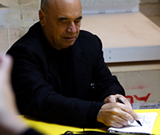
Massimilano Fuksas is one of Italy's most renowned architects, and has recently returned to Rome after designing buildings in Paris for twenty years. Fuksas has designed the Emporio Armani flagship store in Hong Kong, the Eindhoven mall complex in The Netherlands, and construction is underway on his new Congress Center in Rome's EUR. The Congress Center competition, awarded to Fuksas in 2000, prompted his return to Rome and was the catalyst in the awakening of contemporary architecture in Rome after over a decade of no new urban development.
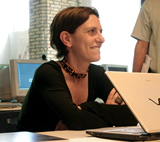 Labics was founded by Maria Claudia Clemente, Francesco Isidori and Marco Sardella in 2002; since 2005 the partners of Labics are Francesco Isidori and Maria Claudia Clemente. All of the three founding members collaborate in the research and teaching activities of 'La Sapienza' University of Rome.
Labics was founded by Maria Claudia Clemente, Francesco Isidori and Marco Sardella in 2002; since 2005 the partners of Labics are Francesco Isidori and Maria Claudia Clemente. All of the three founding members collaborate in the research and teaching activities of 'La Sapienza' University of Rome.
— Interview with principal Luca Galofaro
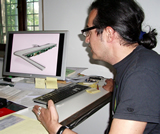
IaN+ is a multi-disciplinary agency that aims at being a place where theory and practice of architecture overlap and meet, in order to redefine the concept of territory as a relational space between the landscape and its human user. In each intervention, projects explicitly question the contemporary urban condition through architecture. Construction and building, seen as an open and variable arena, must usher in a permanently repeated encounter between subject and programme. Architecture is thus conceived as a method endowed with independence, like a perpetual updating of a programmatic and topological diagram.
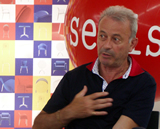
Established in 1983, Segis immediately succeeded as a quality and design oriented company. This attitude, together with a strong commercial dynamism, an extraordinary technological know-how, and an absolute quality care, allowed the company to achieve fast growth with stable international success. These achievements, driven by the devotion, courage and intuition of Franco Dominici, company founder and managing director, have brought Segis along the difficult pathway to design excellence.
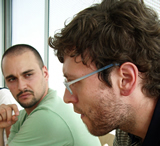
La Sterpaia is a modern workshop of the art of communication. It was founded by Oliviero Toscani in 2005 in collaboration with the Region of Tuscany, and is located in the San Rossore Park near Pisa. This creative lab is focused on finding new languages for different media while responding to a need to wed ideas and markets. It is not a school, nor an agency, but a workshop for young designers to participate in a non-conventional investigation of communication mediums ranging from exhibitions, magazines and films to communication campaigns, websites, fashion shows, journalistic investigations and opinion campaigns.
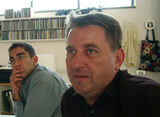
James Irvine was born in London in 1958 and graduated from Kingston Polytechnic Design School (1981 BA) and The Royal College of Art (1984 MA). In 1984 he moved to Milan. From 1984 to 1992 he was a design consultant for Olivetti, designing industrial products under the direction of Michele De Lucchi and Ettore Sottsass. In 1988 he opened a private design studio. Clients included Cappellini, CBI, BRF and SCP. From 1993 to 1997 in parallel to his private studio, he was a partner of Sottsass Associati and was responsible for the industrial design group. Today his design studio in Milan is working with various internationally renowned companies including Artemide, B&B Italia, WMF, Alfi, Magis, Whirlpool, Arabia, Mabeg and Canon Japan.
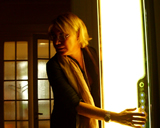
— interview with President Carlotta de Bevilacqua and Marketing Manager Laura Salviati
DANESE was instrumental in defining the DNA of Italian design. Since 1957, the year of its founding, Danese's evolution has been dynamic and strongly innovative, a perfect fusion of design culture, creative research and production technique within not only a conceptual framework but also a concretely productive one expressed through simple objects of great quality. Danese's production embraces a range of archetypal objects whose age and style are hard to define.
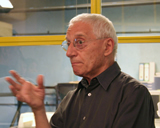
The studio "Atelier Mendini" opened in Milan in 1989. Here, Alessandro joined brother Francesco Mendini to take on projects such as a memorial tower in Hiroshima, Japan; the Groninger Museum in Holland, the Arosa Casino in Switzerland, and many others. The studio itself employs 25 architects, designers, and graphic artists. Experimental design is common place, as well as commercial projects.
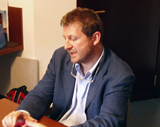
The studio Cino Zucchi Architetti is constantly searching spatial solutions for contemporary life in the delicate and rapidly changing context of the European landscape. Its goal is to conjugate innovation and research with a professional completeness able to respond to complex programs at any scale, employing when needed a well-established net of specialized consultants (structures, plants, traffic, economy, landscape, graphics, light design).
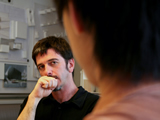
Park Associati was founded in 1999 by Filippo Pagliani and Michele Rossi . The firm's activities range from architecture, to interior and product design. [Their] aim is to look at each project with an experimental approach. [They] enjoy putting together groups of specialized professionals to research and to answer complex design challenges on every scale. ... Park Associati's philosophy is to research innovation in every project, concentrating on materials and the opportunities offered by new building technologies, lighting and multimedia applications.
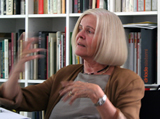
Driade was founded in 1968. Right from the start it worked with designers able to anticipate new lines of research and trends. Its aim is to define a personal and quasi-aristocratic philosophy of home-living. Through the years it has produced furniture and objects to suit every furnishing and lifestyle requirement. Belonging to the Driade trademark are the DriadeChef kitchen catalogues, the Oikos, EasyOikos, Kaos and Pantos systems, and DriadeAleph furniture. The DriadeStore brand is a line of furniture destined for a youthful public. The Follies and D.House object catalogues are part of the DriadeKosmo brand.
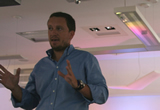
Artemide stresses three principles in their projects: Competence, Italian manufacturing quality, and Design. Their understanding of their brand and changing user needs have kept them at the forefront of lighting design. Founded in the 1960's, Artemide gained quick success by combining industrialization and Italy's craftsmanship quality into their products.
— interview with PR rep Alessandra Noto and Industrial Design Manager Toan Nguyen
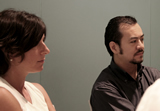
Born in 1950 in Meda, Italy, Antonio Citterio holds a degree in architecture from Milan Polytechnic. In 1972, he opened up a studio focusing on industrial design, and later in 1981 started an architectural and interior design business. In 1999, Antonio Citterio and Partners, a multidisciplinary studio for architectural design, industrial design and graphics, was founded by Citterio and Patricia Viel. Patricia Viel is head of the architecture department and is also involved in the management of the company. Currently the studio headquarters is in Milan and there is also an office located in Hamburg, Germany.
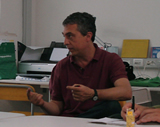
Stefano Boeri is an architect, urban planner and editor-in-chief of Domus. He runs the design firm Boeri Studio and co-founded Multiplicity, an interdisciplinary research group that explores issues of urban transformation. His research centers around the interface of architecture and urbanism with a focus on new conditions for the European City.